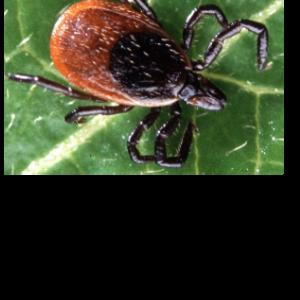Lyme Disease: What You Need to Know to Protect Your Pet

- posted: May 25, 2019
Lyme Disease: What You Need to Know to Protect Your Pet
Ticks are out in full force in Southern Pennsylvania, and with that comes the risk of Lyme disease. York County has one of the highest incidences of Lyme in the United States. While you cannot prevent your pet from ever getting a tick on her, there are ways to reduce Lyme disease transmission in dogs. Thankfully, cats are rarely affected by Lyme-only a handful of reported cases have been documented in immune compromised cats.
Lyme disease is spread by the bite of the Ixodes species of tick also known as the deer tick. These ticks are small—about the size of a sesame seed—and easily overlooked especially in dogs with long or thick haircoats. Lyme is actually caused by Borrelia burgdorferi a type of bacteria known as a spirochete. Immature ticks feed on hosts such as mice or squirrels where they pick up the bacteria. They then mature into adults who carry the bacteria to deer, but deer are a “dead-end” host who do not get sick and do not transmit the bacteria to new ticks. Most people and pets are infected by the very small nymphs carrying the bacteria. About 50% of the deer tick population carry borrelia.
If a tick carrying Lyme bites your dog, it can transmit the disease in as little as 16 hours, but more typically must be attached for 36-48 hours. If a dog becomes infected, he may develop symptoms within two to five months. Symptoms can include lameness, general stiffness or reluctance to move, fever, and painful swollen joints; however, many dogs who test positive for the disease are asymptomatic. A small number of dogs develop a more serious kidney problem called Lyme nephritis which can be fatal.
Lyme disease can be prevented by taking a few precautions.
- Check your pet for ticks daily and remove any ticks that are found. Remember, the longer a tick is attached, the higher the chance of transmitting Lyme. Daily tick checks are a must, particularly for those who spend time in wooded areas or county parks or even our suburban yards. Pay special attention to hunting dogs, dogs who hike with their humans or any others at high risk.
- Use a good quality tick preventative. There are many on the market in both chewable and topical forms that work very well to repel and prevent tick bites. Collars are often not as effective, but there are a few that may work well. Ask our veterinary team about the best option for your pet.
- Consider vaccinating your dog if he or she lives in or frequents high risk areas such as those described above: essentially wooded areas or areas with tall grass where ticks are likely to be found which is basically most of York County! A Lyme vaccine can drastically reduce the chance of transmission of the Lyme bacteria or may reduce the likelihood of your pet becoming ill even if exposed. Some vaccine companies even offer a “guarantee” that will pay for additional testing or treatment if a vaccinated dog tests positive for Lyme.
- And, one more thing: If your dog has tested positive for Lyme disease in the past, it does NOT mean he should not receive the vaccine. Lyme is caused by bacteria, not by a virus so your dog can be re-infected with a new tick bite. In fact, if your dog has Lyme, it means it is likely in your area and even more reason to vaccinate to prevent future infections!
Combining tick checks, tick preventatives and vaccination provides the best chance of preventing your dog from getting Lyme. But, keep in mind, no plan is 100% fool proof. Sometimes, pet parents do everything right, and a few unlucky dogs will STILL get Lyme disease. But these cases are rare. Not all dogs who test positive will develop symptoms or get sick, but if your dog does contract Lyme, she can be treated with antibiotics.
We strive to prevent dogs from being infected with Lyme disease so talk to the Patton vets and staff about how to reduce your dog’s risk for Lyme.
This blog brought to you by the Patton Veterinary Hospital serving Red Lion, York and the surrounding communities.
https://www.cdc.gov/lyme/transmission/index.html
https://www.petmd.com/dog/parasites/scary-facts-about-lyme-disease-in-dogs
Location
Patton Veterinary Hospital
425 E Broadway
Red Lion, PA 17356
